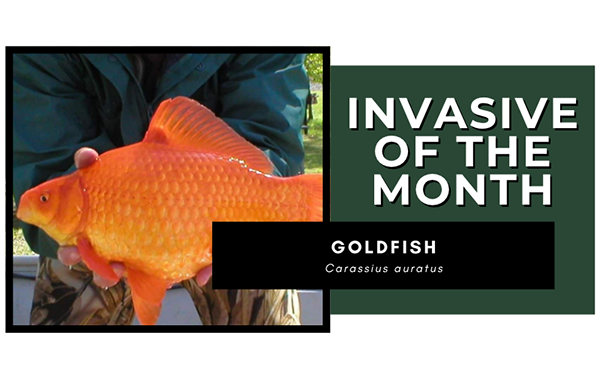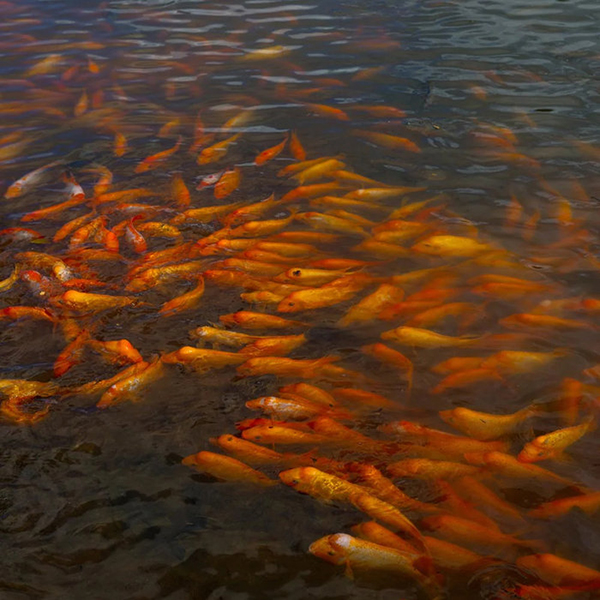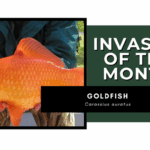Home »

Invasive of the Month
By East Kootenay Invasive Species Society
Goldfish are one of the most widespread invasive fish in North America. This is likely the result of releasing pets.
They are in the Carp family and are native to Asia. Goldfish thrive in brackish streams, ponds, and lakes with aquatic vegetation. They are tolerant of low oxygen conditions and can survive water temperatures between 0-41 °C. They are omnivores, and feed on a variety of crustaceans, insects, smaller fish, and vegetation.
Goldfish are known to reduce the clarity of the waters they inhabit, which reduces the amount of sunlight reaching underwater plants. This causes habitat loss for native aquatic species. Goldfish are designated as a Regional Containment/Control species by the BC Provincial Priority Invasive Species List
Despite their name, Goldfish come in a variety of colours, from olive to silvery-white to gold and orange. Goldfish can interbreed with multiple species of carp, leading to numerous body forms and colours. Large goldfish may resemble carp in appearance and colour, however in goldfish the dorsal fin is always longer than the head and goldfish never have barbels (whiskers).
When fully mature, Goldfish typically reach 15-20 cm long and weigh 100-300 g. The largest Goldfish reported have been up to 59 cm long and weighed 3 kg. The head lacks scales. The dorsal fin is long, going from the middle of the back almost to the tail.
Ecological Impacts: Goldfish can form large wild populations that feed on algae, invertebrates, and fish eggs, stirring up sediment and increasing water turbidity. Cloudier water limits sunlight, harming aquatic plants and oxygen levels, which can lead to algae blooms and affect aquatic wildlife. In the wild, goldfish grow larger, live longer, and breed rapidly, outcompeting native species for resources. They may also carry diseases like Koi herpesvirus, threatening native fish populations.
Economic and Social Impacts: Removing invasive goldfish is costly; eradication from West Medical Lake, WA, cost $150,000 USD. Their presence reduced native trout and harmed local fisheries and tourism. They can also degrade a lake’s appearance, further reducing visitor numbers and revenue.
Management Strategies:
Reducing the spread of goldfish is as simple as not letting them loose in the wild. If you can no longer care for your goldfish, it’s essential that you don’t release it into a natural environment. Instead, consider the following:
– Contact the retailer for advice, or for a possible return/surrender of your pet.
– Give it to another aquarium or pond owner. You can research groups on social media, or on online platforms, and inquire whether they’d be interested in owning your pet.
– Donate it to a local aquarium society or school if they are interested in studying or having it for learning purposes.
Don’t do the following:
– Flush the fish down the toilet as it may pass disease to other fish species whether they are alive or not.
– Release it into the wild.
 East Kootenay Invasive Species Council photos
East Kootenay Invasive Species Council photos
The East Kootenay Invasive Species Council works to minimize the threat of invasive species that impact the environment, the economy and human health in the East Kootenay region of B.C., and we couldn’t do it without you! as a non-profit, we rely on grant funding and the generous support of our community to operate. Your donation will help us continue to protect the East Kootenay from invasive species. Donate here.









